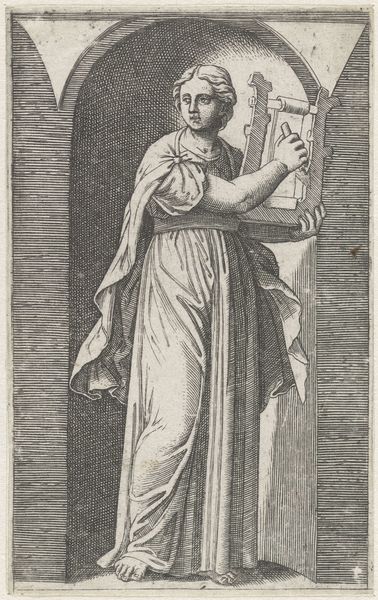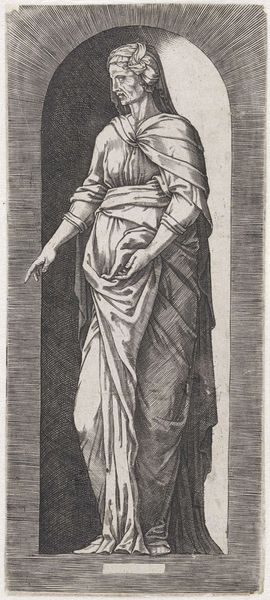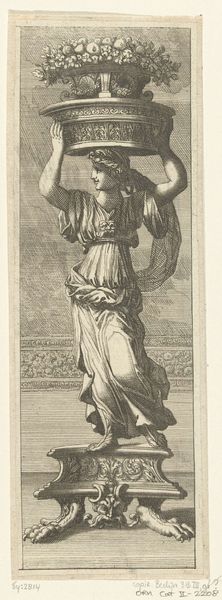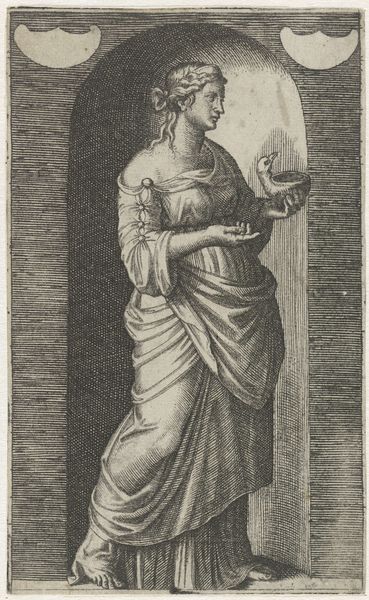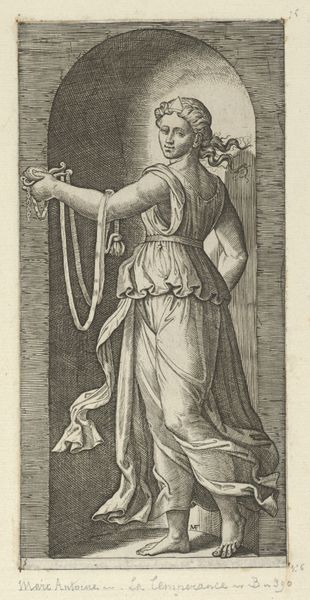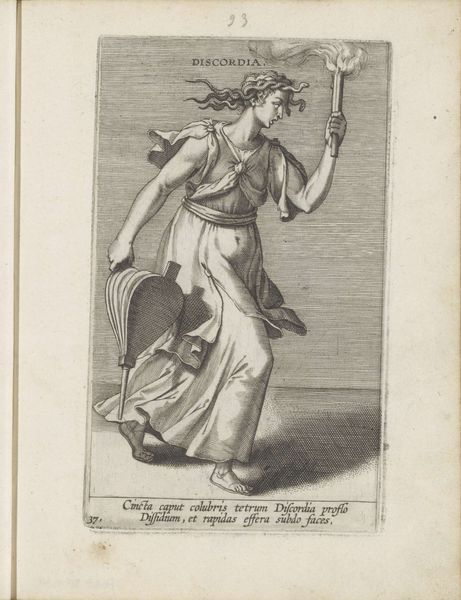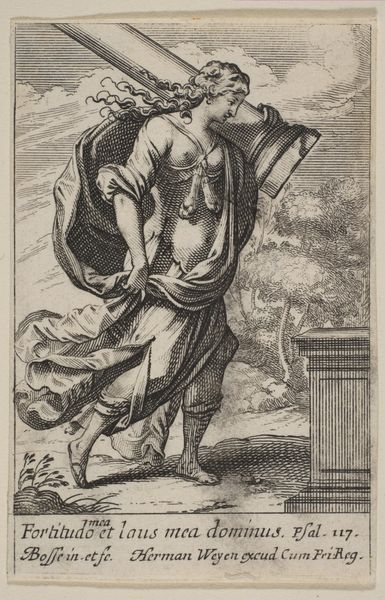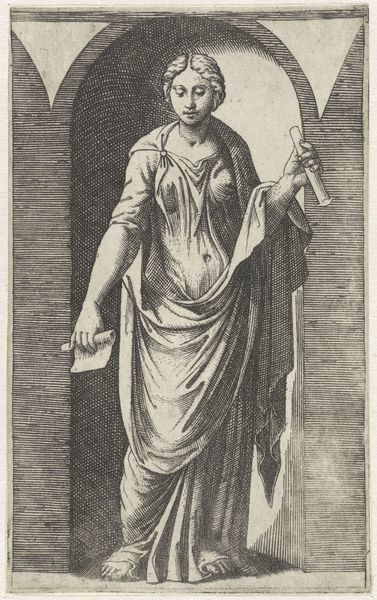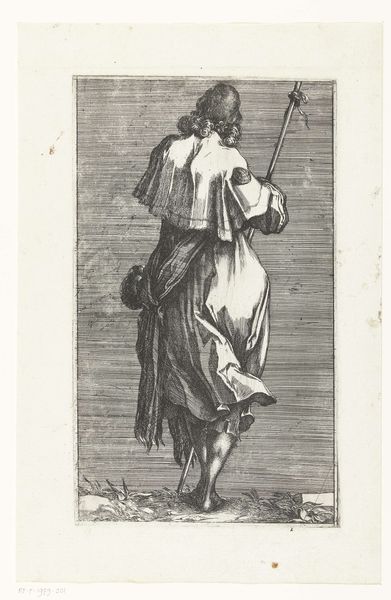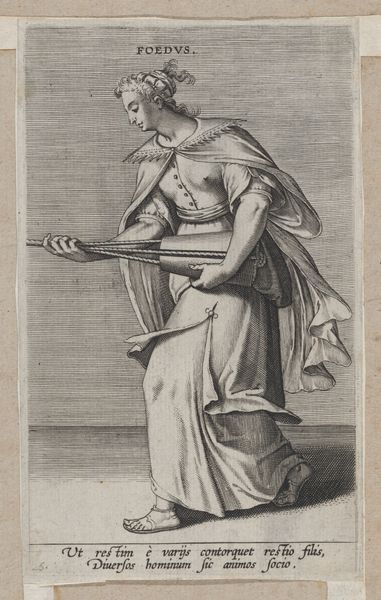
print, engraving
# print
#
old engraving style
#
mannerism
#
figuration
#
form
#
pencil drawing
#
line
#
history-painting
#
italian-renaissance
#
nude
#
engraving
Dimensions: height 217 mm, width 132 mm
Copyright: Rijks Museum: Open Domain
Curator: Look at this print; its high-contrast line work immediately grabs my attention. The way light defines form is masterful. Editor: I find this emotionally overwhelming. The poised figure against an ambiguous space conveys a narrative heavy with the burden of societal expectation, perhaps from the Roman Republic period. Curator: This is indeed "Lucretia stands on the point of killing herself with dagger", an engraving created sometime between 1509 and 1560. Although the author is unknown, its composition is undeniably Mannerist with a figure inhabiting a theatrical, stage-like architectural frame. Editor: Her pose seems both resigned and defiant, and there's almost an audacity in placing her against such cold, formal geometry and text. Curator: Precisely. Observe how the architectural elements, despite their meticulous rendering, serve primarily to compartmentalize Lucretia, emphasizing her emotional isolation through these formal, linear enclosures. It is quite stark. Editor: How does this compare to other interpretations of Lucretia's story from that era? She wasn’t some lone madwoman, but her suicide followed the rape by Sextus Tarquinius. Curator: Most certainly it is directly linked to a deeply embedded narrative. While this particular engraving foregrounds a study of the female nude as it dramatically exists on the threshold of self-annihilation as a means to protest power. The engraving offers limited contextualization beyond that. The inscriptions are key. One proclaims: “Better to die than live in disgrace”, while the other relays: "I was forced to take power because of the fierce pain of the tyrant. Pudicitia does not suffer that he is injured. Editor: In essence, she becomes an archetype here, rather than simply Lucretia. A figure whose actions symbolize political tensions. Curator: I fully concur. This emphasis transforms the print from a narrative scene into an emblematic representation of stoic virtue and female rebellion, a potent commentary given the period. Editor: Ultimately, this interpretation allows viewers to interpret what such self-empowerment looks like amid socio-political upheaval. Curator: Seeing it again reinforces my feeling that such compositional tension offers a powerful viewing experience. Editor: Yes, examining the convergence of art and historical narrative through such potent visuals truly leaves its mark.
Comments
No comments
Be the first to comment and join the conversation on the ultimate creative platform.


